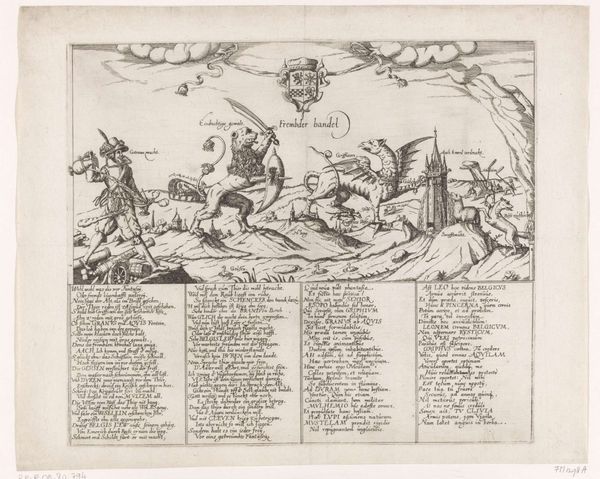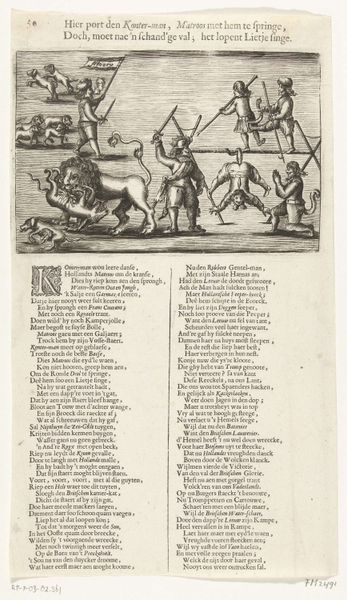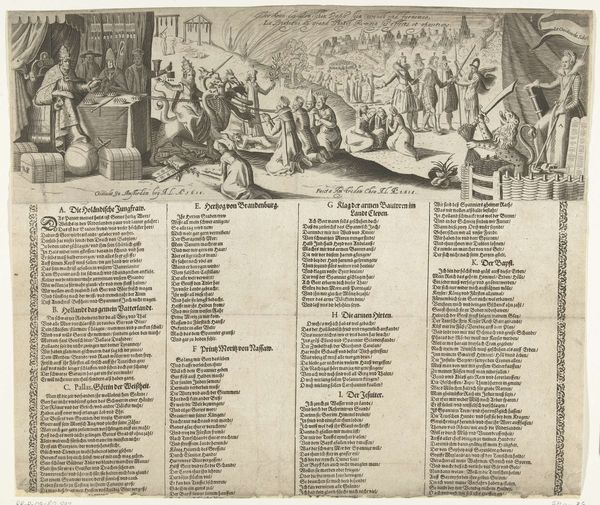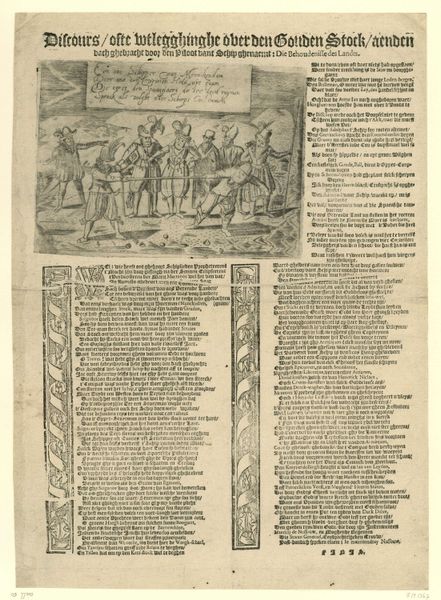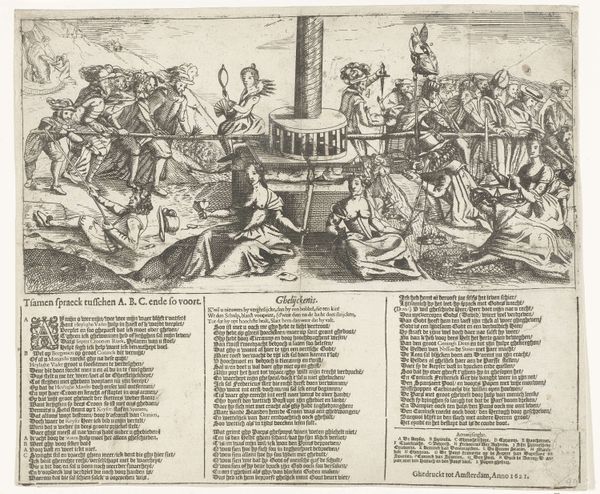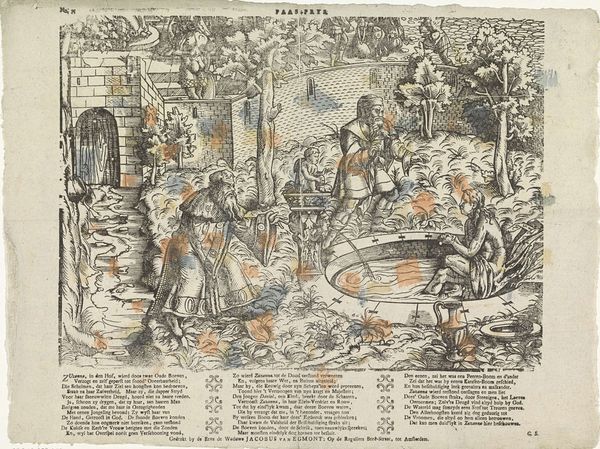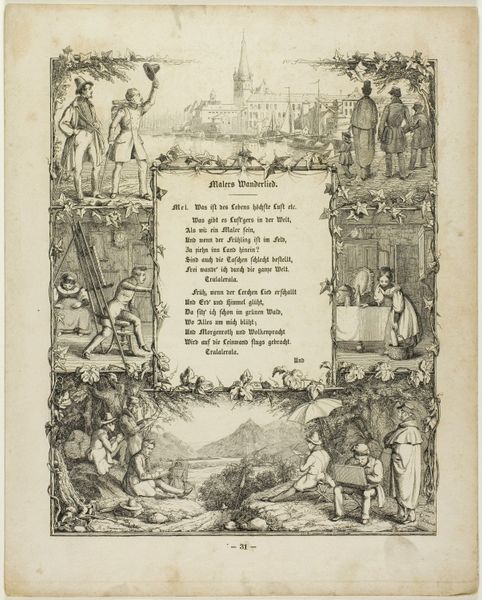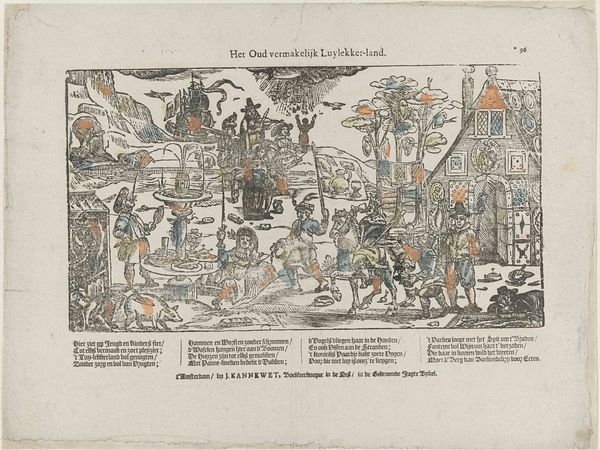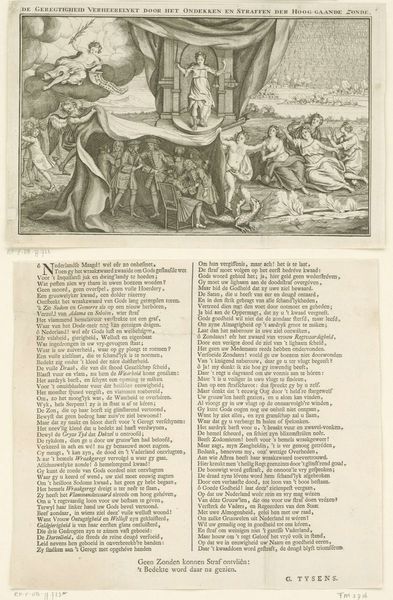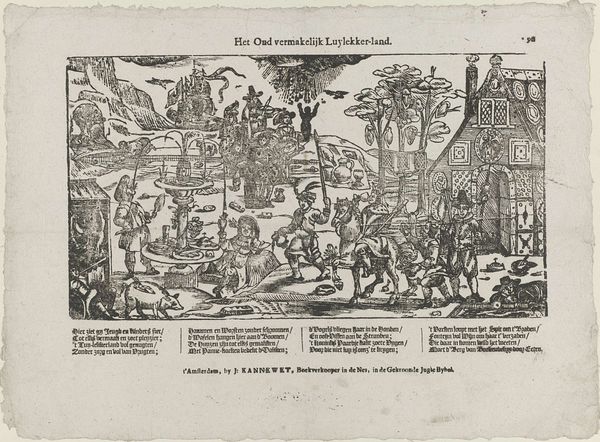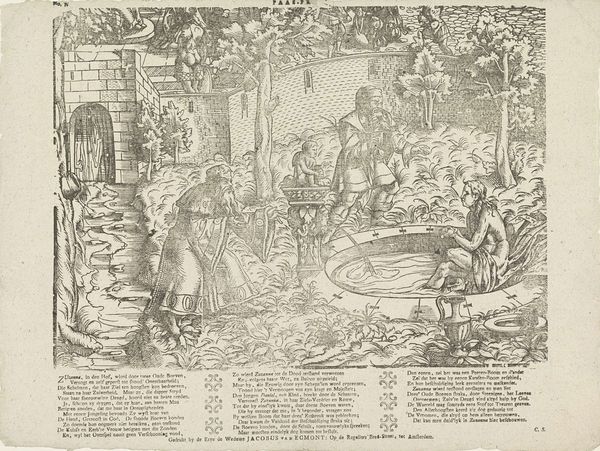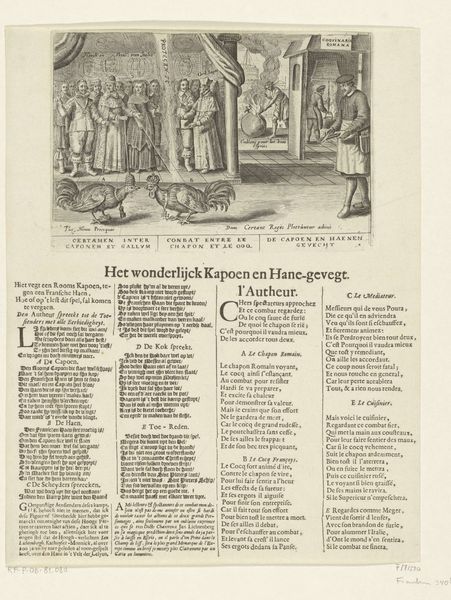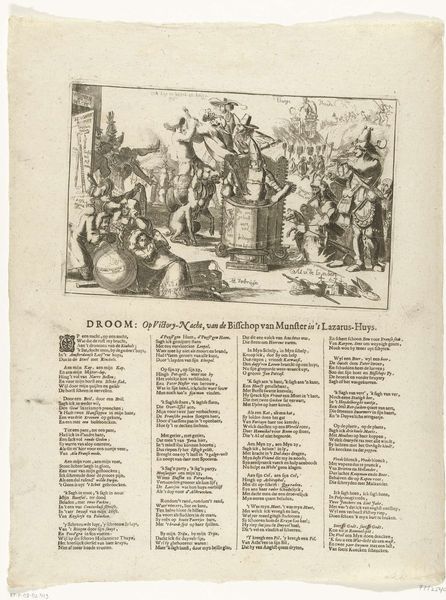
Die lui en lekker is, moet zich op reis begeeven, om in Luilekkerland als als de rest te leeven 1761 - 1804
0:00
0:00
Dimensions: height 300 mm, width 414 mm
Copyright: Rijks Museum: Open Domain
Curator: So, let’s dive into this engraving, “Die lui en lekker is, moet zich op reis begeeven, om in Luilekkerland als als de rest te leeven,” dating from 1761-1804. What's your initial impression? Editor: Well, at first glance, it feels almost dreamlike, a bit like a strange map leading to somewhere unusual. I am curious, what do you see in this piece? Curator: For me, it's a window into the social anxieties and aspirations of the time. "Luilekkerland" – or "Land of Cockaigne" – represents a topsy-turvy world where work is abolished and pleasure reigns. The print highlights themes of social mobility and the anxieties surrounding wealth, and who has the 'right' to enjoy life’s bounty. It is not coincidental that pigs often populate the landscape… Why do you think the artist chose the Land of Cockaigne to convey those themes? Editor: Perhaps it offered a satirical lens. By inverting the social order, the artist could critique the growing inequalities in wealth distribution while playfully referencing a legendary escape. Curator: Exactly. We can delve deeper into how this engraving fits within the broader genre of "world upside down" imagery, used across different cultures to explore social commentary through humor and satire. The artist gives us many signs and symbols. What stands out to you? Editor: I see the contrast between the figures working hard to get to the land of Cockaigne, contrasted by the ease and the luxury depicted within the fantasy. Is that perhaps indicative of some criticism from the artist regarding his contemporaries? Curator: That is something we can examine by putting it into conversation with theories around class, and contemporary thought regarding work ethic in Dutch society during that period, and explore the intended audience of this engraving. What have you learned through examining this engraving? Editor: I am starting to understand that artworks are like complex stories reflecting the times they were created. Looking closely at visual culture allows us to uncover all sorts of stories that we have available to us today! Curator: Indeed, this print offers a fascinating look into a particular historical moment, while posing timeless questions about labor, leisure, and the pursuit of happiness.
Comments
No comments
Be the first to comment and join the conversation on the ultimate creative platform.
